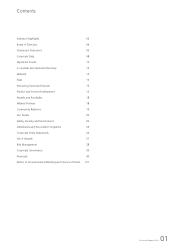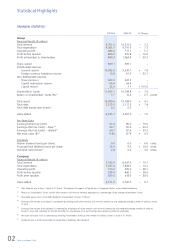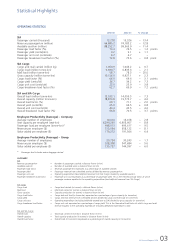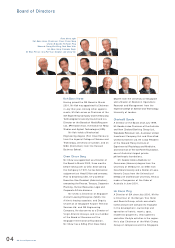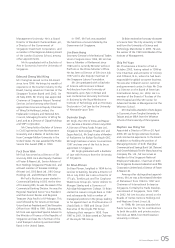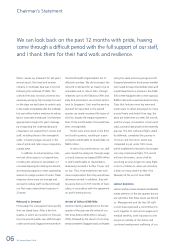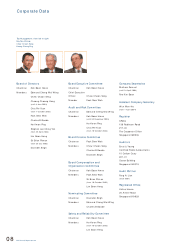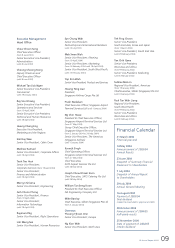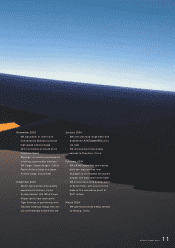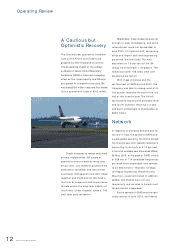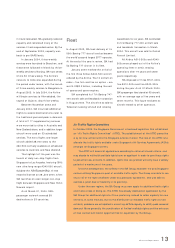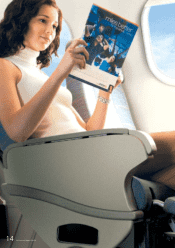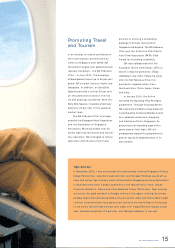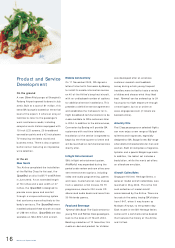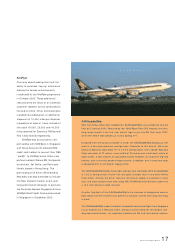Singapore Airlines 2004 Annual Report Download - page 9
Download and view the complete annual report
Please find page 9 of the 2004 Singapore Airlines annual report below. You can navigate through the pages in the report by either clicking on the pages listed below, or by using the keyword search tool below to find specific information within the annual report.
SIA Annual Report 03/04 07
Koh Boon Hwee
Chairman
staff. With increasing competition, we
must become more efficient throughout
our operations. We must be flexible
enough to at least break even, if not show
a small profit, under the most difficult
economic conditions.
We are not focusing on wage
restructuring alone. During the year under
review, we engaged consultants to assist
us in conducting a business process review
and identified several areas where we
could function more efficiently and save
on costs. We are now in the process of
implementing the recommendations
arising from this review.
We are explaining to our staff why
we need to make these changes, but an
article in the Company newsletter will not
be enough. Constant communication,
education and time are needed.
Nevertheless, we are confident a change
in mindset will come. With that, and a
better understanding of the challenges of
the new environment, our staff will rally
behind the Company in full support, as
they have done so many times before.
Low-cost Carriers
Another issue that has commanded wide
media attention in Singapore is the
emergence of low-cost carriers in this part
of the world. After much consideration,
SIA decided to take a 49 per cent stake
in a new low-cost airline, Tiger Airways.
The new airline will begin operations later
this year to cities within a four-hour flying
radius of Singapore.
We decided to invest in Tiger Airways
because we believe the low-cost model of
airline operations that has been so
successful in Europe and the United States
can succeed in Asia as well. It can open up
a new segment of the air travel market
comprising customers who may not have
been able to afford air travel very often, if
at all, previously.
Like many other markets, the aviation
market can be segmented. Just as high-
end automobiles, like Mercedes, BMW or
Lexus co-exist and are financially successful,
even though they have lower cost
competitors like Toyota or Hyundai, so
premium airlines like SIA can co-exist with
airlines offering products and services of
lesser quality, and at lower fares.
There will be market segments that
will be happy to travel on no-frills airlines
but there will still be others willing to pay
for the services that traditional airlines
provide. Among the latter, SIA’s reputation
is second to none. There is, therefore,
absolutely no question of SIA becoming a
no-frills carrier in the long-term. Instead,
we intend to enhance our position as a
premium airline offering a product and
service that others seek to match.
In this regard, we are working
aggressively on configuring the A380 for
which we will be launch customer in 2006.
It is our goal to provide a product and
service that will raise the standard in the
industry yet another notch.
The New Financial Year: Changes and
Challenges
At the beginning of the new financial year,
a more streamlined organizational structure
was announced. Under this structure, six
senior executives will report directly to the
CEO, heading the areas of Operations and
Services, Marketing (including the overseas
regions), Corporate Services, Finance,
Human Resources and Planning. This
change in structure was implemented
following the business process review
mentioned earlier.
However, new challenges face us, not
least the soaring cost of fuel which, at the
time of writing this report, had risen to an
unprecedented high level, making it
necessary for us and other airlines to
introduce a fuel surcharge and clouding
the outlook for the coming year.
But we can look back on the past 12
months with pride, having come through
a difficult period with the full support of
our staff, and I thank them for their hard
work and resilience. I commend
Management’s decisiveness and execution
in responding to the situation we faced. I
also thank my fellow Board members for
their support and advice during a most
testing year.
We now approach the year ahead with
determination as we adapt to a more
competitive environment.



